A Guide to the Best Trees to Plant in Your Garden
Published: August 22, 2025 at 9:04:55 AM UTC
Trees are one of nature's greatest gifts to your garden. They provide life-giving oxygen, create cooling shade, offer protection from winds, prevent soil erosion, produce delicious fruits, attract beneficial wildlife, and transform your outdoor space with their beauty. Whether you're looking to enhance your landscape's appeal or create a more sustainable environment, choosing the right trees for your garden is a decision that will benefit you for decades to come.
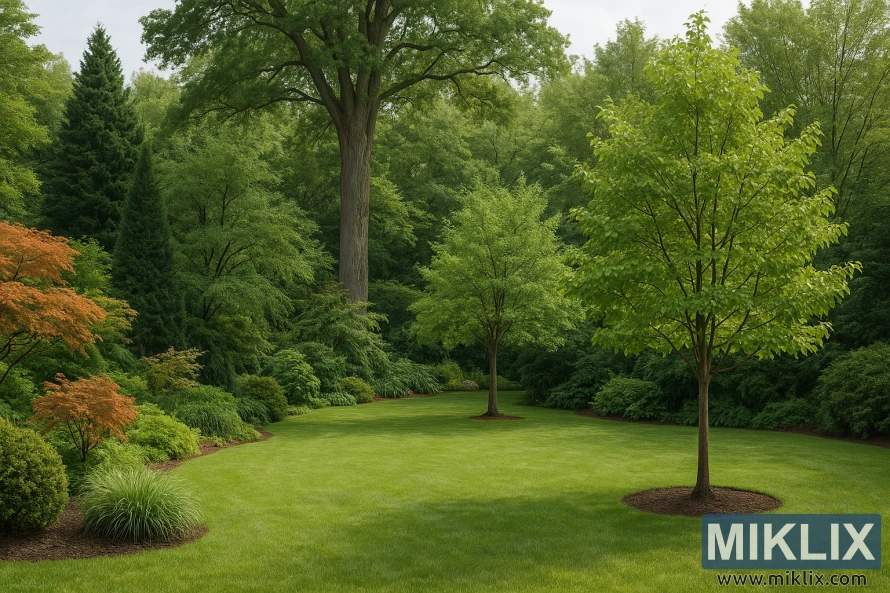
Key Factors to Consider When Choosing Trees
Selecting the perfect trees for your garden requires careful consideration of several important factors. The right choice will thrive in your specific conditions while meeting your landscaping goals.
Climate Compatibility
Check your USDA hardiness zone to ensure the tree can withstand your region's temperature extremes. Some trees thrive in cold climates, while others prefer warmer conditions. Always consider both winter lows and summer highs when selecting trees.
Soil Conditions
Assess your soil type (clay, sandy, loam), drainage capabilities, and pH level. Some trees prefer acidic soils, while others thrive in alkaline conditions. Testing your soil before planting can prevent future problems and disappointment.
Available Space
Consider both the mature height and width of the tree. Remember to account for overhead power lines, nearby structures, and underground utilities. A tree that outgrows its space can become a costly problem.
Sunlight Exposure
Evaluate how much sun your planting location receives daily. Some trees require full sun (6+ hours), while others prefer partial shade or can even thrive in mostly shaded areas.
Purpose & Function
Determine what you want from your tree—shade, privacy, wildlife attraction, seasonal color, fruit production, or simply aesthetic appeal. Different trees excel at different functions.
Maintenance Requirements
Consider how much time you're willing to invest in care. Some trees need regular pruning, pest management, or cleanup of dropped fruits, flowers, or leaves.
Top Trees to Plant in Your Garden
Based on beauty, adaptability, and overall garden performance, these trees consistently rank among the best choices for home landscapes. Each offers unique benefits and visual appeal throughout the seasons.
1. Dogwood (Cornus)
Key Features:
- Height: 15-30 feet tall
- Width: 10-15 feet wide
- Growth Rate: Slow to moderate
Ideal Growing Conditions:
Dogwoods prefer partial shade with morning sun and afternoon protection. They thrive in slightly acidic, well-drained soil with consistent moisture. They're not drought-tolerant and benefit from mulching to retain soil moisture.
Seasonal Appeal:
Dogwoods offer year-round interest with showy white, pink, or red flowers in spring, lush green foliage in summer, vibrant red fall color, and attractive branching patterns in winter. Some varieties also produce red berries that attract birds.
Benefits:
These trees provide moderate shade, create beautiful focal points in landscapes, and support wildlife with their berries. Their modest size makes them perfect for smaller gardens and front yards.
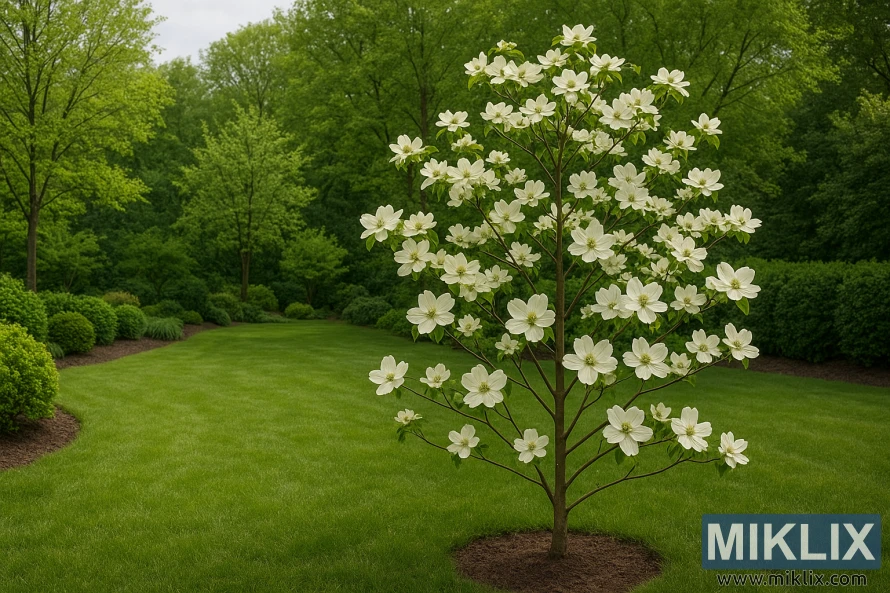
2. Japanese Maple (Acer palmatum)
Key Features:
- Height: 10-25 feet tall
- Width: 10-25 feet wide
- Growth Rate: Slow
Ideal Growing Conditions:
Japanese maples prefer dappled sunlight or morning sun with afternoon shade. They thrive in well-drained, slightly acidic soil rich in organic matter. Protection from harsh winds helps preserve their delicate foliage.
Seasonal Appeal:
These trees are prized for their delicate, dissected leaves that emerge in spring with vibrant colors, maintain interest through summer, and transform into brilliant scarlet, orange, or gold in fall. Their sculptural branching patterns provide winter interest.
Benefits:
Japanese maples make excellent specimen trees, creating focal points in gardens. Their smaller size makes them perfect for patios, entryways, and container gardening. They add an elegant, artistic element to any landscape.
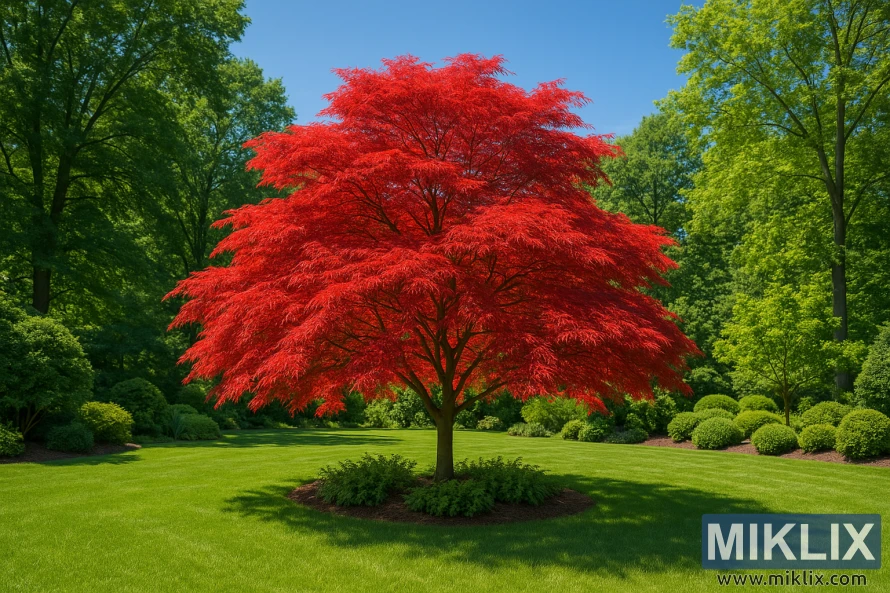
3. Sugar Maple (Acer saccharum)
Key Features:
- Height: 60-75 feet tall
- Width: 40-50 feet wide
- Growth Rate: Moderate
Ideal Growing Conditions:
Sugar maples thrive in full sun to partial shade and prefer well-drained, moderately moist, fertile soil. They tolerate a range of pH levels but prefer slightly acidic to neutral conditions. They're not suitable for hot, dry climates.
Seasonal Appeal:
While known for their spectacular fall display of yellow, orange, and red foliage, sugar maples also offer attractive green leaves in summer and interesting bark patterns in winter. Spring brings small, yellowish-green flowers.
Benefits:
These magnificent shade trees create cooling canopies for large yards. They support wildlife, reduce energy costs by shading homes, and can be tapped for maple syrup production. Their strong wood makes them long-lived landscape anchors.
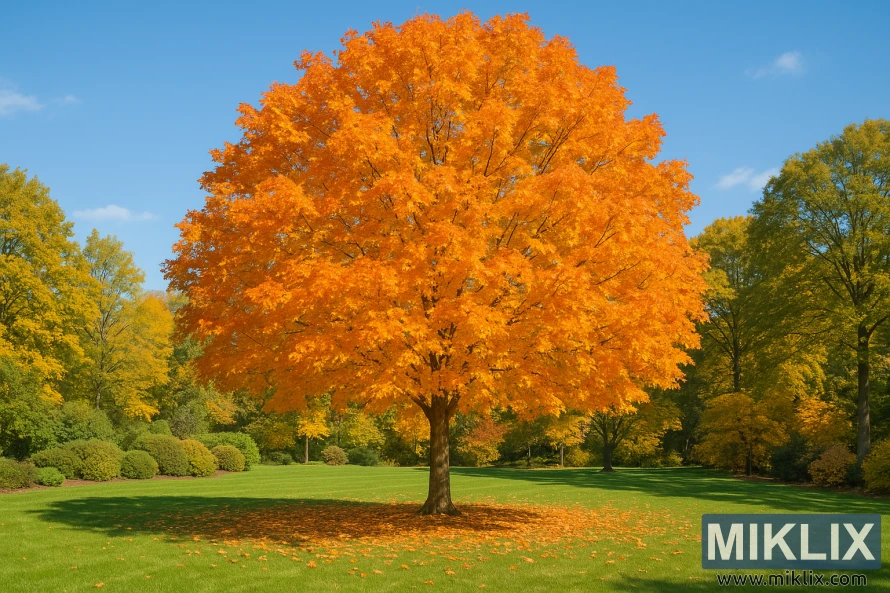
4. Crabapple (Malus)
Key Features:
- Height: 15-25 feet tall
- Width: 15-25 feet wide
- Growth Rate: Moderate
- USDA Hardiness Zones: 4-8
Ideal Growing Conditions:
Crabapples require full sun for best flowering and fruit production. They adapt to various soil types but prefer well-drained, moderately moist conditions. Choose disease-resistant varieties to minimize maintenance needs.
Seasonal Appeal:
Spring brings a spectacular display of white, pink, or red blossoms. Summer foliage is typically dark green, followed by colorful fruits in shades of red, orange, or yellow that persist into winter. Some varieties offer bronze or purple leaves.
Benefits:
Crabapples attract pollinators in spring and birds in fall and winter. Their moderate size works well in most landscapes, and their four-season interest makes them valuable garden additions. Many newer varieties are highly disease-resistant.
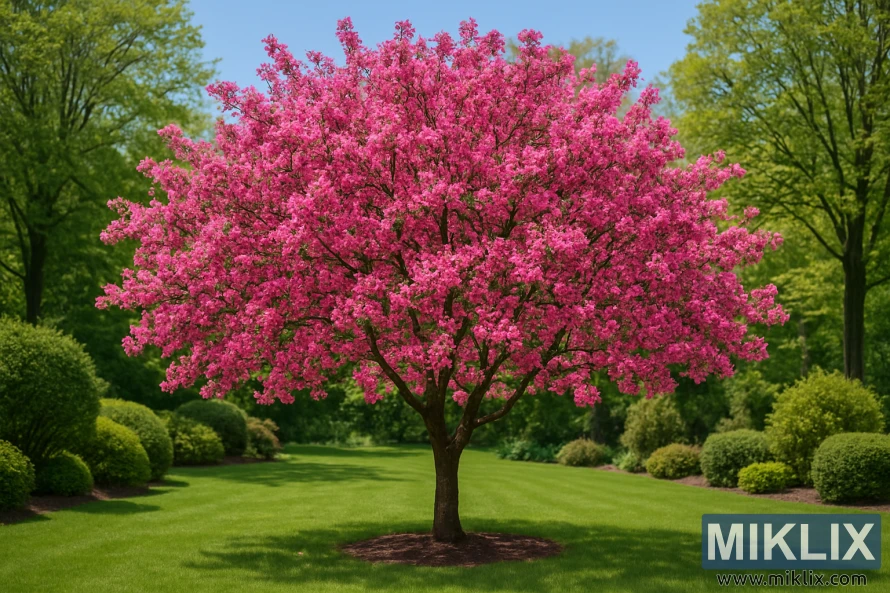
5. Magnolia (Magnolia spp.)
Key Features:
- Height: 15-80 feet tall (varies by species)
- Width: 10-40 feet wide
- Growth Rate: Slow to moderate
Ideal Growing Conditions:
Magnolias prefer full sun to light shade and rich, well-drained, slightly acidic soil. They benefit from protection against strong winds that can damage flowers and branches. Consistent moisture, especially during establishment, is important.
Seasonal Appeal:
Depending on the species, magnolias produce spectacular white, pink, purple, or yellow flowers in early spring or summer. Their large, glossy leaves provide summer interest, and some species offer colorful seed pods in fall.
Benefits:
Magnolias create stunning focal points in landscapes with their dramatic flowers and elegant form. Their fragrant blossoms attract pollinators, and their varied sizes mean there's a magnolia suitable for almost any garden space.
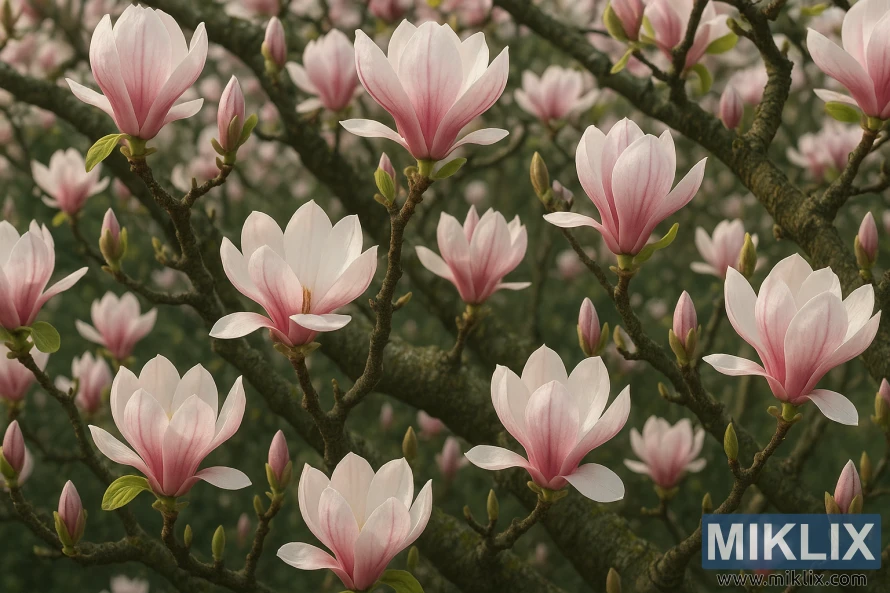
6. Serviceberry (Amelanchier)
Key Features:
- Height: 15-25 feet tall
- Width: 15-25 feet wide
- Growth Rate: Moderate
Ideal Growing Conditions:
Serviceberries grow well in full sun to partial shade and adapt to various soil types, though they prefer moist, well-drained conditions. They're quite adaptable and can tolerate both clay and sandy soils once established.
Seasonal Appeal:
Early spring brings clusters of fragrant white flowers, followed by edible purple-blue berries in summer that attract birds. Fall foliage turns brilliant orange-red, and smooth gray bark provides winter interest.
Benefits:
These native trees support wildlife, produce edible berries for human consumption, and offer multi-season interest. Their smaller size makes them suitable for urban gardens, and they can be grown as multi-stemmed shrubs or single-trunk trees.
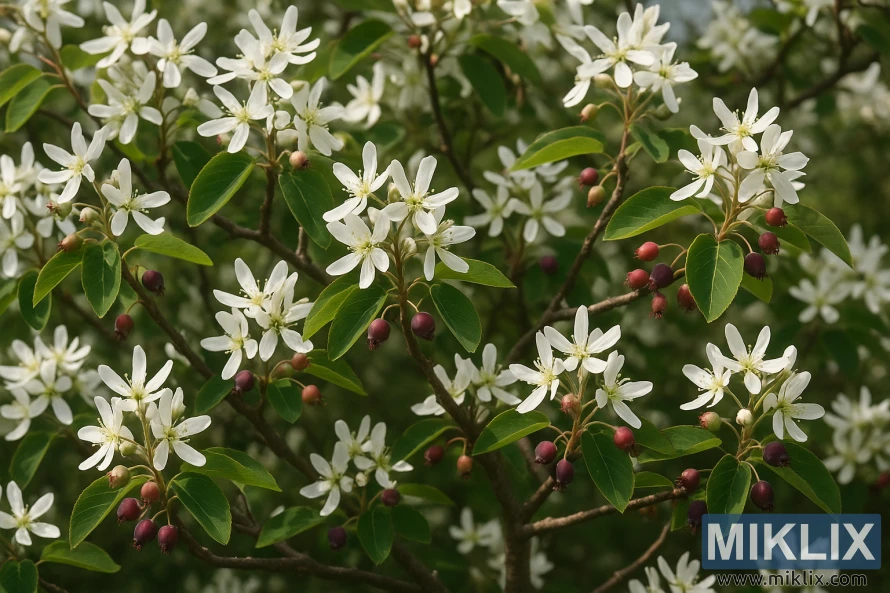
7. Eastern Redbud (Cercis canadensis)
Key Features:
- Height: 20-30 feet tall
- Width: 25-35 feet wide
- Growth Rate: Moderate
Ideal Growing Conditions:
Redbuds perform best in full sun to partial shade and prefer moist, well-drained soil. They're adaptable to various soil types and pH levels but don't tolerate extremely wet conditions or prolonged drought.
Seasonal Appeal:
In early spring, branches burst with pink-purple flowers before leaves emerge. Heart-shaped leaves follow, turning yellow in fall. Interesting seed pods persist through winter, and mature trees develop attractive bark patterns.
Benefits:
These native trees support pollinators, add early spring color to gardens, and work well as understory trees in woodland settings. Their graceful, spreading form creates dappled shade, and they're relatively disease-resistant.
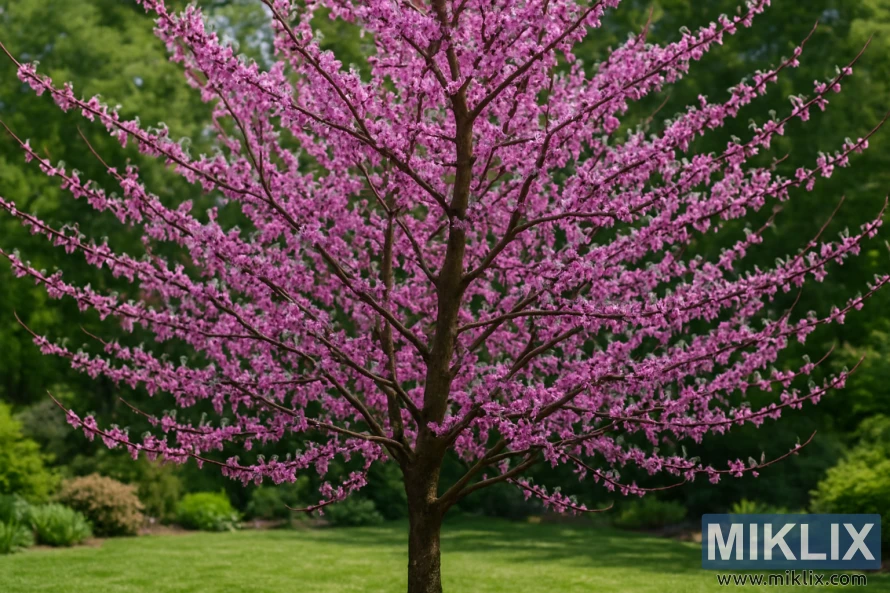
8. Weeping Cherry (Prunus subhirtella 'Pendula')
Key Features:
- Height: 20-30 feet tall
- Width: 15-25 feet wide
- Growth Rate: Moderate
Ideal Growing Conditions:
Weeping cherries need full sun for best flowering and prefer well-drained, fertile soil with consistent moisture. They don't tolerate wet feet or extreme drought and benefit from protection against strong winds.
Seasonal Appeal:
Spring brings a breathtaking display of pink or white blossoms cascading along weeping branches. Summer foliage is green, turning yellow to bronze in fall. The graceful branching structure provides winter interest.
Benefits:
These ornamental trees create dramatic focal points in landscapes with their unique weeping form. They attract pollinators when in bloom and provide moderate shade. Their elegant silhouette adds year-round visual interest to gardens.
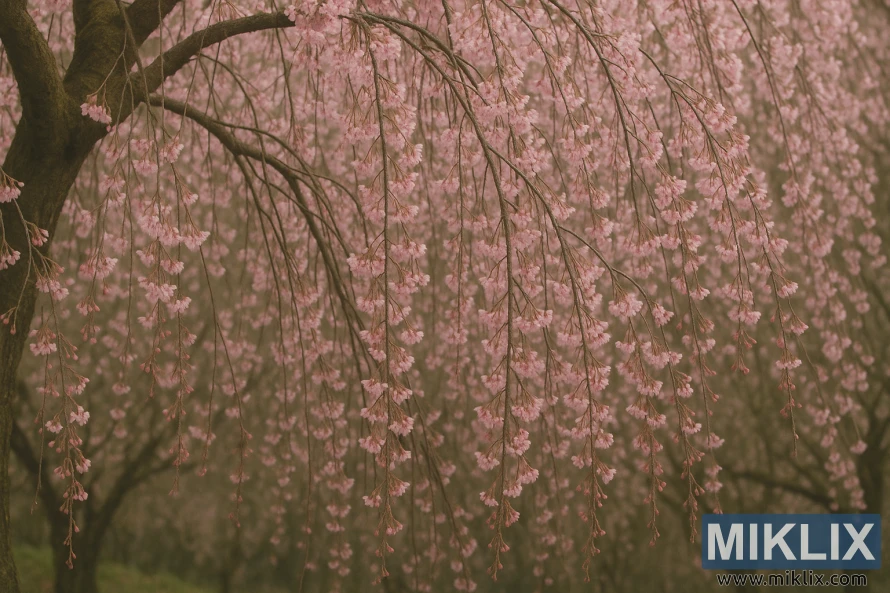
9. 'Green Giant' Arborvitae (Thuja 'Green Giant')
Key Features:
- Height: 40-60 feet tall
- Width: 12-18 feet wide
- Growth Rate: Fast (3-5 feet per year)
Ideal Growing Conditions:
Arborvitae thrive in full sun to partial shade and prefer moist, well-drained soil. They're adaptable to various soil types but don't perform well in extremely dry conditions. They're more deer-resistant than other arborvitae varieties.
Seasonal Appeal:
These evergreen trees maintain rich green foliage year-round, providing consistent structure and color in the landscape. Their pyramidal form creates strong vertical elements in garden design.
Benefits:
Arborvitae excel as privacy screens, windbreaks, and noise barriers. Their fast growth rate quickly establishes green walls between properties. They require minimal pruning and are relatively disease-resistant compared to other privacy options.
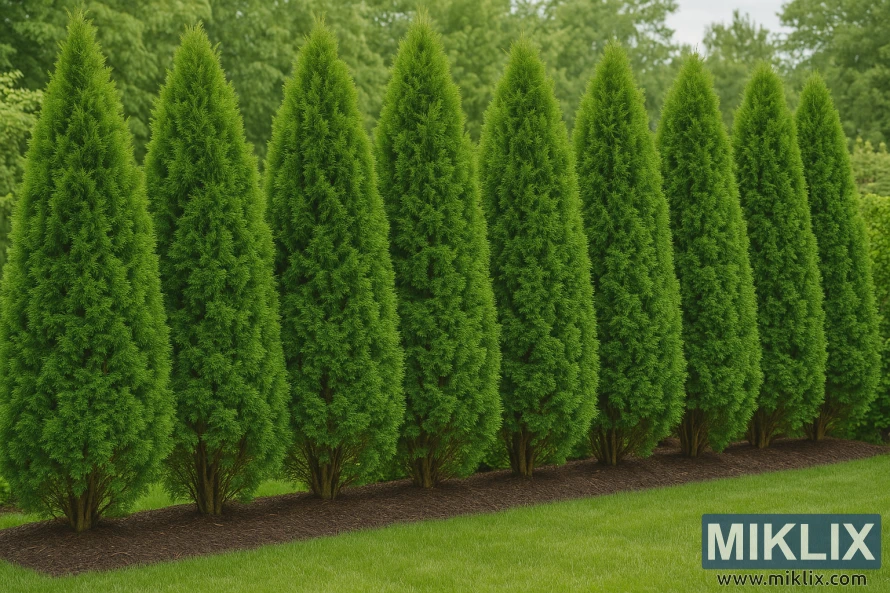
10. River Birch (Betula nigra)
Key Features:
- Height: 40-70 feet tall
- Width: 40-60 feet wide
- Growth Rate: Fast
Ideal Growing Conditions:
River birches prefer full sun to partial shade and thrive in moist, acidic soils. Unlike many birches, they tolerate heat and humidity well. They can handle periodic flooding but also adapt to drier sites once established.
Seasonal Appeal:
The exfoliating cinnamon-colored bark creates year-round interest, especially on multi-stemmed specimens. Bright green leaves turn yellow in fall, and catkins appear in spring. Their graceful form adds movement to landscapes.
Benefits:
These native trees are more resistant to birch borer than other birches, making them longer-lived landscape specimens. They work well in rain gardens, provide dappled shade, and their roots help stabilize soil in wet areas.
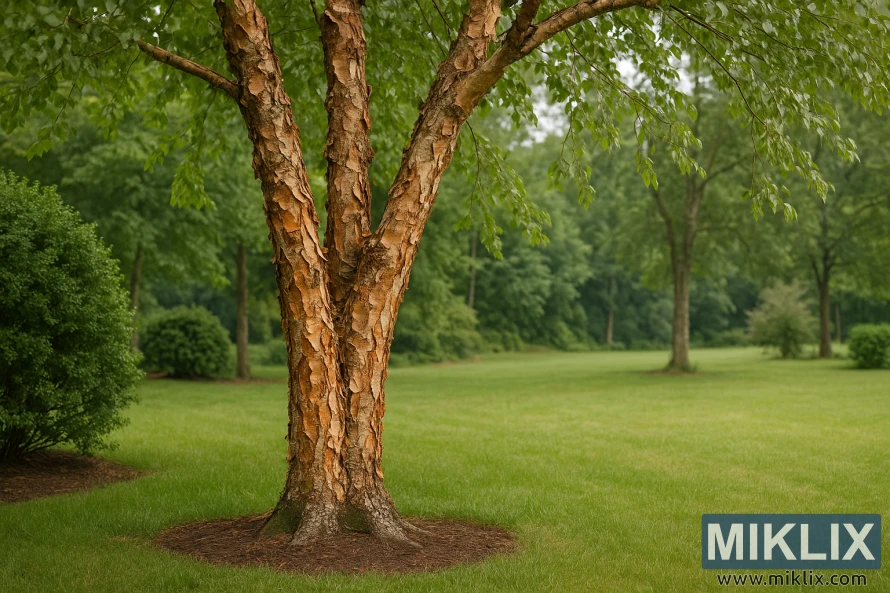
Best Low-Maintenance Trees for Beginners
If you're new to gardening or simply prefer plants that don't require constant attention, these low-maintenance trees offer beauty without demanding excessive care.
Bur Oak
This incredibly hardy oak species is drought-tolerant once established and requires minimal pruning. Its strong limbs resist storm damage, and it's relatively free from pest and disease problems.
Ginkgo
Remarkably resistant to pests, diseases, and urban pollution, ginkgos require almost no maintenance once established. Their distinctive fan-shaped leaves turn brilliant gold in fall.
Linden
These adaptable trees tolerate various soil conditions and urban environments. They require minimal pruning and are relatively pest-free, making them excellent low-maintenance shade trees.
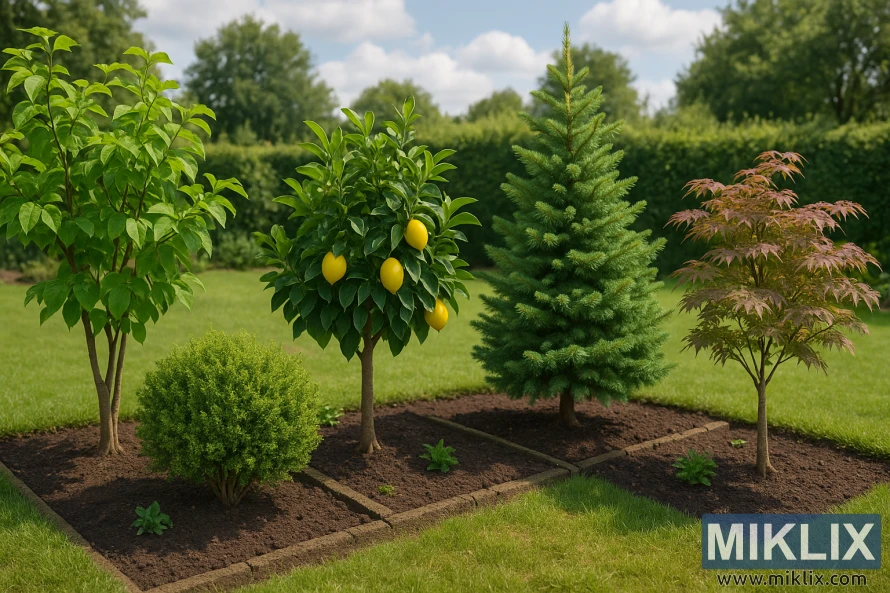
Essential Tree Planting Tips
Proper planting is crucial for your tree's long-term health and success. Follow these guidelines to give your new trees the best possible start in your garden.
Best Planting Season
Fall is generally the ideal time to plant trees in most regions. The soil is still warm enough for root development, but the cooler air temperatures reduce transplant stress. Early spring is the second-best option, while summer planting requires extra watering attention.
Proper Spacing
Consider the tree's mature width when determining spacing. For most shade trees, plant at least 15-20 feet from buildings and 10-15 feet from other trees. For privacy screens, space trees based on their expected width at maturity.
Watering Guidelines
Newly planted trees need regular deep watering for the first two years. Water deeply once or twice weekly rather than frequent shallow watering. Create a watering basin around the tree and apply mulch to retain moisture.
Tree Planting Essentials
- Dig a hole 2-3 times wider than the root ball but only as deep as the root ball height
- Remove all packaging, burlap, wire baskets, and strings from the root ball
- Position the tree so the root flare (where trunk widens at base) is slightly above ground level
- Backfill with native soil, avoiding amendments in most cases
- Water thoroughly after planting to eliminate air pockets
- Apply 2-3 inches of mulch in a ring around the tree, keeping it away from the trunk
- Stake only if necessary in very windy locations, and remove stakes after one year
Conclusion
The right trees can transform your garden into a vibrant, living sanctuary that provides beauty, shade, and habitat for years to come. When selecting trees for your landscape, prioritize species that match your growing conditions, available space, and maintenance preferences. Native trees often offer the best combination of beauty and ecological benefits while requiring less care once established.
Remember that trees are long-term investments in your property. Take time to research your options, consider how the trees will look as they mature, and plant with proper techniques to ensure success. With thoughtful selection and care, the top trees you plant in your garden today will create a legacy of beauty and environmental benefits for generations to enjoy.
Further Reading
If you enjoyed this post, you may also like these suggestions:
- Best Oak Trees for Gardens: Finding Your Perfect Match
- A Guide to the Best Arborvitae Varieties to Plant in Your Garden
- A Guide to the Best Varieties of Weeping Cherry Trees to Plant in Your Garden
